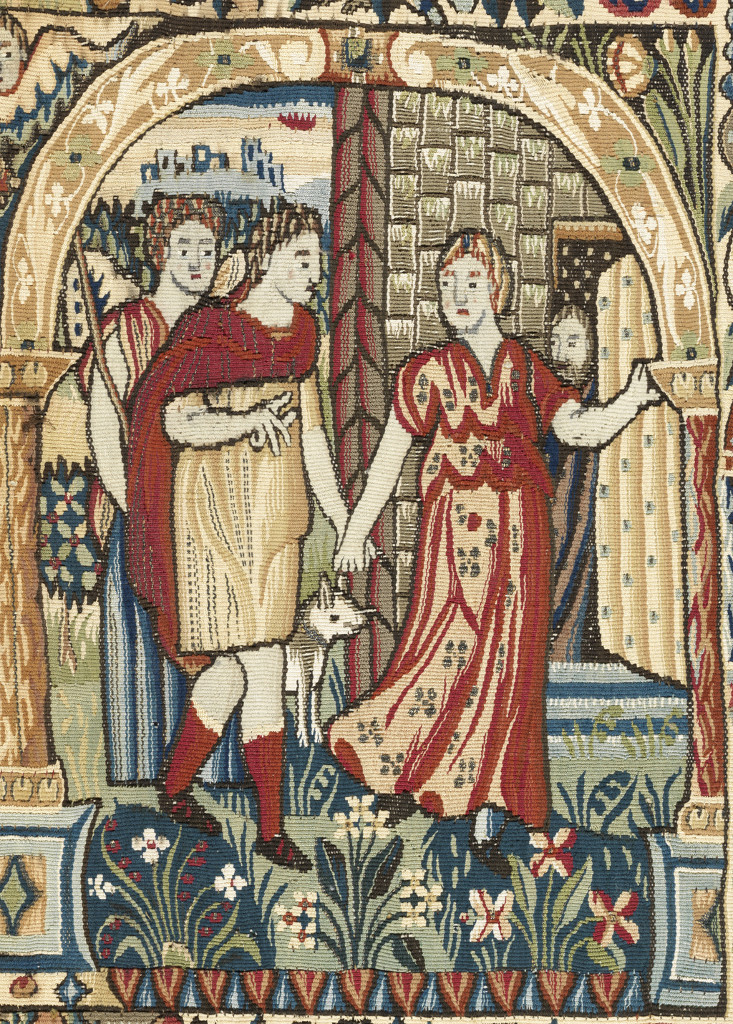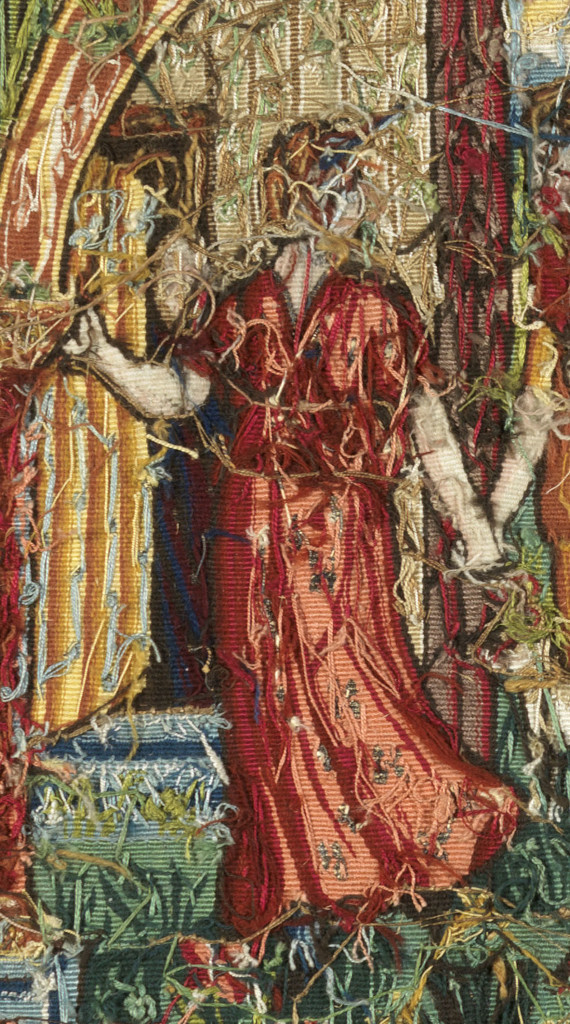The job of the master weaver began long before weaving could start. Woollen and silk threads of different thicknesses and quality had to be ordered in sufficient quantity to complete the whole job. Because there was little by way of ready-made supplies, thread had to be dyed, again in sufficient quantity to complete the job, as otherwise a new batch of dyed thread might not match what had been used before. There is as yet no way to tell where any particular master bought his materials and it is hard to trace the source of the dyes used.
Finished tapestries were generally lined with canvas, at least for part of their length. This provided protection from dirt and damp from the walls and gave them extra strength. Usually colours are brighter on the back, having been hidden from the light. The reverse side may look rather messy, with threads sticking out. The weaver did not bother to cut his thread but simply moved the shuttle across to the next patch of the same colour.






